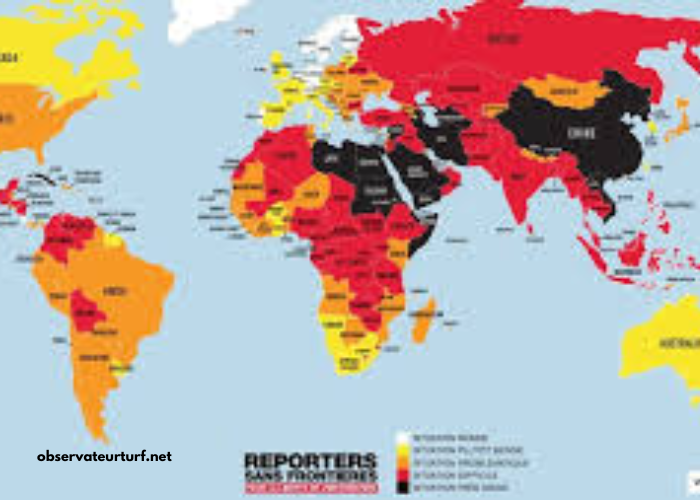The Classement DE LA Presse is a key tool used to rank and evaluate media outlets based on various metrics, such as readership, influence, and credibility. It provides a comprehensive overview of the most prominent newspapers, magazines, and digital platforms in the world. As the media landscape continues to evolve, understanding the importance of Classement DE LA Presse is crucial for both consumers and industry professionals alike.
In an era where information is readily available at our fingertips, the Classement DE LA Presse plays a significant role in guiding readers towards credible sources and helping media outlets understand their position in the competitive media environment. This article will explore the various aspects of Classement DE LA Presse, how it works, and why it matters in today’s media-driven society.
What Is Classement DE LA Presse?
Classement DE LA Presse refers to the ranking system that categorizes media outlets based on their influence, reach, and readership. It includes newspapers, magazines, and online publications, measuring how well they perform in terms of both traditional circulation and digital engagement. This ranking helps media companies gauge their audience’s preferences and the overall performance of their publications.
The Classement DE LA Presse considers several factors, including print and digital subscriptions, web traffic, social media presence, and audience demographics. By aggregating this data, it provides a clear picture of which media outlets are leading in their field. It is an essential tool for media professionals, advertisers, and readers alike, helping them stay informed about the most popular and influential outlets.
How Is Classement DE LA Presse Calculated?
The calculation behind the Classement DE LA Presse is based on a complex set of metrics. These include traditional measures, such as circulation figures for print publications, as well as digital metrics like website traffic, social media engagement, and the number of online subscribers.
Additionally, qualitative factors like reputation, editorial influence, and brand trustworthiness are also considered in the ranking.
The most influential publications in the Classement DE LA Presse often have strong print and digital presences, with substantial readership and engagement across multiple platforms. Media outlets with strong social media followings, viral content, and high interaction rates tend to perform better in the rankings. However, it’s not just about the numbers; the credibility and perceived quality of the content are equally important in determining a publication’s standing.
Why Is Classement DE LA Presse Important?
The Classement DE LA Presse holds significant importance for several reasons. For media outlets, it provides valuable insights into their standing relative to competitors, which can inform their content strategy, marketing efforts, and overall business decisions. Knowing where they stand in the rankings helps these outlets assess whether they need to adapt their approaches to engage more readers.
For advertisers, Classement DE LA Presse is a crucial tool when deciding where to place ads. The higher a publication ranks, the more likely it is to reach a wider, more diverse audience. Advertisers can target specific demographics and audiences based on the rankings, ensuring that their ads reach the right people in the most influential media outlets.
Moreover, the Classement DE LA Presse helps readers by highlighting the most reputable and widely-read publications. In a world where misinformation is rampant, this ranking system acts as a guide for readers to identify trustworthy and credible sources of information.
How Does Classement DE LA Presse Affect Media Competition?
The media industry is highly competitive, and Classement DE LA Presse plays a crucial role in this dynamic. Publications constantly strive to improve their rankings by increasing their readership, enhancing their digital presence, and boosting their overall engagement with the audience. In this competitive environment, those at the top of the Classement DE LA Presse enjoy increased visibility and influence.
The rankings also encourage media outlets to innovate and adapt to changing audience preferences. As digital media becomes more dominant, traditional publications must find new ways to attract readers, whether through interactive content, multimedia features, or subscription-based models. The Classement DE LA Presse highlights these shifts and reflects the ongoing evolution of the media landscape.
As new players enter the market, existing media outlets must work harder to retain their positions. This creates an environment where quality journalism, innovation, and audience engagement are key factors that influence rankings. By understanding the importance of Classement DE LA Presse, media companies can develop strategies to stay competitive and grow their influence in the industry.
How Do Classement DE LA Presse Rankings Affect Public Perception?
The Classement DE LA Presse not only affects the media companies but also has a significant impact on how the public perceives various publications. Higher-ranked publications are often seen as more trustworthy, influential, and credible. As a result, they attract a larger and more loyal audience. Readers are more likely to rely on these top-ranked sources for news and information, believing them to be authoritative.
In contrast, media outlets that rank lower in the Classement DE LA Presse may struggle to build the same level of trust and credibility. This can affect their ability to retain readers and attract advertisers, as they may be perceived as less influential or reputable.
However, it’s important to note that rankings are not static, and publications can improve their standing through strategic efforts to engage their audience and enhance the quality of their content.
The Classement DE LA Presse also influences the broader media ecosystem, as it shapes how journalists and media organizations are perceived in society. Media outlets with higher rankings often attract better talent, increased funding, and greater opportunities for collaboration with other influential institutions.
What Role Does Classement DE LA Presse Play in the Digital Age?
In the digital age, the role of Classement DE LA Presse has evolved significantly. While traditional print media still plays an essential role, digital media is becoming increasingly important.
The rise of online publications, blogs, and social media platforms has reshaped how information is consumed and shared. As a result, the Classement DE LA Presse has adapted to reflect the growing influence of digital media.
Today, the Classement DE LA Presse places a significant emphasis on digital metrics, such as website traffic, social media engagement, and online subscriptions. Media outlets that excel in the digital realm are more likely to rank highly, even if they have a smaller print circulation. This reflects the shift towards online news consumption, as more readers turn to their devices for up-to-date information.
For media companies, embracing digital transformation is crucial to improving their ranking in the Classement DE LA Presse. Publications that invest in their digital presence and engage readers through online platforms are more likely to stay competitive and maintain a strong position in the rankings.
Conclusion
In conclusion, the Classement DE LA Presse is a vital system for ranking and evaluating media outlets based on their readership, influence, and credibility. It provides crucial insights for media companies, advertisers, and readers, helping them understand the state of the media landscape and make informed decisions.
As the media industry continues to evolve, the Classement DE LA Presse will remain an essential tool for measuring success and guiding future growth. Whether you’re a media professional or a reader, understanding these rankings can help you navigate the complex world of media and make smarter, more informed choices.




